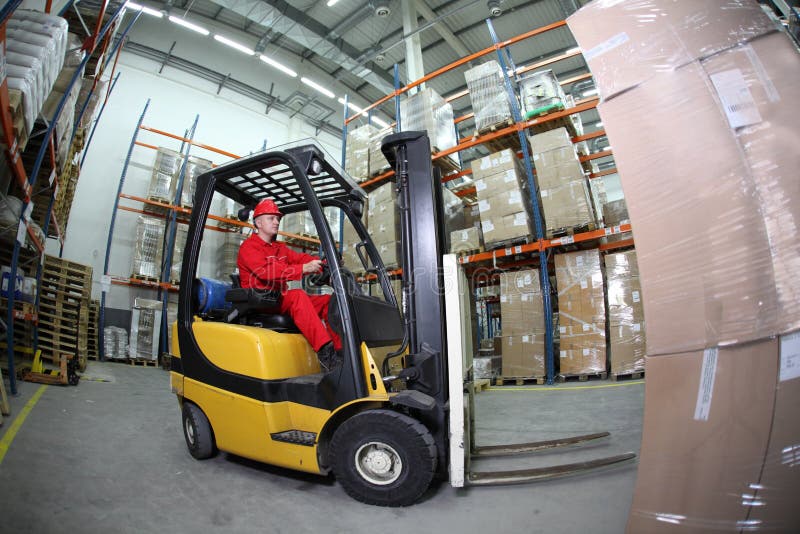Forklifts on the Move: Expert Tips for Safe Handling and Transport
from web site
Forklifts are essential equipment in a wide range of industries, from warehousing and construction to manufacturing and logistics. These heavy-duty machines play a vital role in efficiently handling and transporting heavy loads. However, it is crucial to prioritize safety when it comes to operating forklifts, both for the operators and those working nearby. In this article, we will delve into expert tips and best practices for safe handling and transport of forklifts, ensuring that these powerful machines are used responsibly and accidents are minimized. So, let's explore the important considerations and techniques that will keep the forklifts on the move in a secure and efficient manner.
Proper Preparation for Forklift Handling
Before handling a forklift, it is crucial to ensure that all necessary preparations have been made. By taking the necessary steps to prepare, the safety of both operators and the forklift itself can be effectively maintained. Here are some expert tips for proper preparation when handling forklifts:
Conduct Pre-Use Inspections: Before operating a forklift, it is essential to thoroughly inspect the machine. Check for any visible damage or defects, such as leaks, worn tires, or malfunctioning brakes. Ensure that all safety features, including lights, horns, and seatbelts, are in proper working condition. Any issues found during the inspection should be promptly reported and addressed by a qualified professional.
Clear the Workspace: Creating a clear and organized workspace is essential for safe forklift handling. Before operating the forklift, remove any obstacles or debris from the designated area. Ensure that the floor surface is clean and free from any spills, which could cause the forklift to skid or lose stability. By maintaining a clear workspace, the risk of accidents or collisions can be significantly reduced.

Properly Secure the Load: When transporting materials with a forklift, it is crucial to ensure that the load is properly secured. Use appropriate restraints, such as straps or chains, to prevent the load from shifting or falling during transport. Ensure that the load is evenly distributed on the forklift forks to maintain stability. Properly securing the load will help prevent accidents caused by load imbalance or unexpected movement.
By following these expert tips for proper preparation, forklift operators can significantly reduce the risk of accidents and ensure the safe handling and transportation of forklifts. Remember, safety should always be the top priority when operating these powerful machines.
Safe Practices for Transporting Forklifts
When it comes to transporting forklifts, safety should always be the top priority. Ensuring proper handling and transport of these heavy machinery is crucial for the well-being of both operators and those in the surrounding areas. By following these expert tips, you can minimize the risks associated with forklift transportation.
Secure the Load: Before moving a forklift, it is essential to ensure that the load it is carrying is properly secured. best practices for transporting excavators prevents the load from shifting during transport but also maintains the stability of the forklift itself. Make use of chains, straps, or locks to secure the load and avoid any potential accidents or damages.
Inspect the Forklift: Regular inspections are vital to identify any potential issues or damages that could compromise the safety of the forklift during transportation. Check the tires, brakes, steering system, and any other relevant components to ensure they are in proper working condition. Address any maintenance or repair needs before transporting the forklift.
Choose the Correct Transport Method: Selecting the most suitable transport method for your forklift is crucial. Depending on the type and size of the forklift, you might opt for a trailer, flatbed truck, or specialized forklift transport vehicle. Ensure that the chosen method can safely accommodate the size and weight of the forklift, providing adequate stability and support throughout the journey.
Remember, safe handling and transport practices minimize the risk of accidents and injuries related to forklift transportation. By securing the load, conducting regular inspections, and choosing the correct transport method, you can ensure a smooth and safe journey for your forklifts. Always prioritize safety and take the necessary precautions to protect both people and equipment during transportation.
Maintenance and Inspection for Forklift Safety
Regular maintenance and inspection of forklifts are crucial for ensuring safe handling and transport. By closely monitoring and addressing any potential issues, operators can greatly minimize the risk of accidents and maintain optimal performance. Here are some expert tips on maintenance and inspection to enhance forklift safety:
Implement a thorough daily inspection routine. Before each shift, it is important to inspect the forklift thoroughly for any signs of wear, damage, or malfunction. Pay attention to key components such as the tires, brakes, hydraulic system, and steering mechanism. Additionally, ensure that all safety features like lights, horns, and seat belts are functioning properly. Any issues identified should be immediately reported and addressed to prevent further complications.
Schedule regular servicing and maintenance. In addition to daily inspections, it is crucial to have a comprehensive maintenance schedule in place. Regular servicing by trained professionals helps identify hidden problems, prevent breakdowns, and extend the lifespan of the forklift. This involves tasks such as checking fluid levels, inspecting and cleaning the battery, tightening loose connections, and lubricating moving parts. Adhering strictly to the manufacturer's guidelines for maintenance can significantly enhance forklift safety.
Train operators on basic maintenance tasks. While major repairs should always be handled by trained technicians, empowering operators with knowledge of basic maintenance tasks can contribute to forklift safety. This includes simple tasks like checking and adjusting tire pressure, inspecting and cleaning the forks, and replacing worn-out parts. By recognizing potential issues and performing minor maintenance tasks, operators can help ensure that their forklifts are in optimal condition and safe to operate.
Remember, maintenance and inspection go hand in hand when it comes to forklift safety. By implementing a robust routine and involving both operators and professionals, businesses can prioritize the well-being of their workforce while maximizing efficiency in handling and transporting forklifts.
